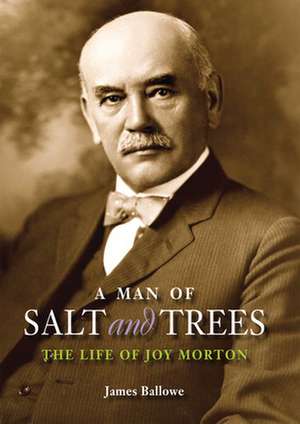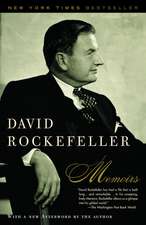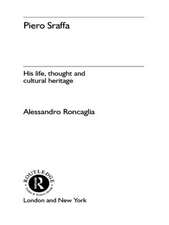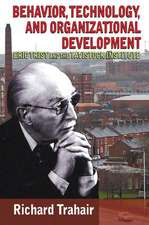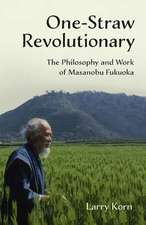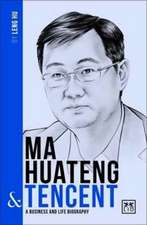A Man of Salt and Trees: The Life of Joy Morton
Autor James Balloween Limba Engleză Paperback – 5 mar 2018
A Man of Salt and Trees is the first full-length biography of Joy Morton (1855-1934), founder of The Morton Arboretum—an internationally acclaimed outdoor museum of woody plants—and Morton Salt—the brand that for over a century has been a household name in the United States. Joy Morton’s story begins in the pre–Civil War Nebraska Territory and concludes in the midst of the Great Depression in Chicago, the city in which he lived for over a half century. Using the voluminous correspondence of the Morton family, Ballowe tells the story of the Nebraska farm boy who grew up to be a small town banker who became a leading citizen of Chicago and Illinois and a major figure in the nation’s economic and technological development during the late 19th and early 20th centuries.
Morton left his mark in several areas, from business and city planning to transportation and environmental preservation. He was a contributor to the development of Daniel H. Burnham and Edward Bennett’s 1909 Plan of Chicago, which continues to affect the way Chicagoans protect the Lakefront and approach transportation and park issues throughout the region. During the last three decades of his life, Morton served on the Chicago Plan Commission. His interest in transportation led him to become an investor and a director in railroad transportation and a champion of inland waterway traffic. He also single-handedly financed early advancements of the teletype, a technology that advanced the economic and cultural development of the 20th century.
Toward the end of his life, Morton funded the University of Chicago’s explorations of Mississippian Indian culture in central Illinois and traveled throughout the world visiting ancient as well as modern cultures and gardens. The Morton Arboretum stands today as a natural expression of a desire Joy Morton had from childhood, when he learned from his father, the founder of Arbor Day, and his mother, a dedicated gardener, that a necessary complement to a good life is the cultivation and preservation of the environment.
Morton left his mark in several areas, from business and city planning to transportation and environmental preservation. He was a contributor to the development of Daniel H. Burnham and Edward Bennett’s 1909 Plan of Chicago, which continues to affect the way Chicagoans protect the Lakefront and approach transportation and park issues throughout the region. During the last three decades of his life, Morton served on the Chicago Plan Commission. His interest in transportation led him to become an investor and a director in railroad transportation and a champion of inland waterway traffic. He also single-handedly financed early advancements of the teletype, a technology that advanced the economic and cultural development of the 20th century.
Toward the end of his life, Morton funded the University of Chicago’s explorations of Mississippian Indian culture in central Illinois and traveled throughout the world visiting ancient as well as modern cultures and gardens. The Morton Arboretum stands today as a natural expression of a desire Joy Morton had from childhood, when he learned from his father, the founder of Arbor Day, and his mother, a dedicated gardener, that a necessary complement to a good life is the cultivation and preservation of the environment.
| Toate formatele și edițiile | Preț | Express |
|---|---|---|
| Paperback (1) | 124.99 lei 3-5 săpt. | |
| Northern Illinois University Press – 5 mar 2018 | 124.99 lei 3-5 săpt. | |
| Hardback (1) | 168.24 lei 3-5 săpt. | |
| Northern Illinois University Press – 22 mar 2009 | 168.24 lei 3-5 săpt. |
Preț: 124.99 lei
Nou
Puncte Express: 187
Preț estimativ în valută:
23.92€ • 24.88$ • 19.75£
23.92€ • 24.88$ • 19.75£
Carte disponibilă
Livrare economică 25 martie-08 aprilie
Preluare comenzi: 021 569.72.76
Specificații
ISBN-13: 9780875807577
ISBN-10: 0875807577
Pagini: 318
Ilustrații: 28
Dimensiuni: 152 x 229 x 23 mm
Greutate: 0.45 kg
Ediția:1
Editura: Northern Illinois University Press
Colecția Northern Illinois University Press
ISBN-10: 0875807577
Pagini: 318
Ilustrații: 28
Dimensiuni: 152 x 229 x 23 mm
Greutate: 0.45 kg
Ediția:1
Editura: Northern Illinois University Press
Colecția Northern Illinois University Press
Recenzii
“[This is a] fine biography that Ballowe constructed from a careful study mainly of Morton’s personal and family papers. A man of salt and trees? Yes, and much more.”—EH.Net
“Ballowe gives the reader a life that can be touched, encompassed, and which feels natural….As one reads the book Morton’s human side is clear and fascinating.”—Journal of Illinois History
“Clearly organized and well-written. Ballowe makes excellent use of primary sources to create a literate and engaging biography.”—Ann Keating, North Central College
“The great strength of this book is its use of Morton Papers to give a close reading of the subject’s life and corporate achievements. It provides a concrete case study of larger themes and issues historians associate with Chicago’s coming of age as a regional and national center of commerce and culture.”—Dennis Downey, Millersville University
Notă biografică
James Ballowe, Distinguished Professor of English Emeritus at Bradley University, teaches in the Naturalist Certificate Program at The Morton Arboretum. He has received awards from the Illinois Arts Council for his poetry and creative non-fiction and the Delta Award from the Morris Library at Southern Illinois University for his publications on Southern Illinois. He is the editor of George Santayana's America: Essays in Literature and Culture.
Cuprins
Table of Contents
List of Images
Acknowledgments
Preface
Part I: 1854–1879
Prologue
1. A Prairie Education
2. A Prolonged Apprenticeship
Part II: 1880–1915
3. A Place in Chicago
4. Joy Morton & Co.
5. Two Cities
6. Business and Politics
7. Toward a New Century
8. Civic Commitment
9. The House on the Hill
Part III: 1916–1934
10. War: Home and Abroad
11. The Morton Arboretum
12. Investing in Illinois
13. Embracing the Future
Epilogue
The Morton Family’s Chicago: 1880–1905
Family Trees
-Joy Morton’s Immediate Family
-Joy Morton’s Brothers’ Families
Notes
Bibliography
Index
Acknowledgments
Preface
Part I: 1854–1879
Prologue
1. A Prairie Education
2. A Prolonged Apprenticeship
Part II: 1880–1915
3. A Place in Chicago
4. Joy Morton & Co.
5. Two Cities
6. Business and Politics
7. Toward a New Century
8. Civic Commitment
9. The House on the Hill
Part III: 1916–1934
10. War: Home and Abroad
11. The Morton Arboretum
12. Investing in Illinois
13. Embracing the Future
Epilogue
The Morton Family’s Chicago: 1880–1905
Family Trees
-Joy Morton’s Immediate Family
-Joy Morton’s Brothers’ Families
Notes
Bibliography
Index
Descriere
A Man of Salt and Trees is the first full-length biography of Joy Morton (1855-1934), founder of The Morton Arboretum—an internationally acclaimed outdoor museum of woody plants—and Morton Salt—the brand that for over a century has been a household name in the United States. Joy Morton’s story begins in the pre–Civil War Nebraska Territory and concludes in the midst of the Great Depression in Chicago, the city in which he lived for over a half century. Using the voluminous correspondence of the Morton family, Ballowe tells the story of the Nebraska farm boy who grew up to be a small town banker who became a leading citizen of Chicago and Illinois and a major figure in the nation’s economic and technological development during the late 19th and early 20th centuries.
Morton left his mark in several areas, from business and city planning to transportation and environmental preservation. He was a contributor to the development of Daniel H. Burnham and Edward Bennett’s 1909 Plan of Chicago, which continues to affect the way Chicagoans protect the Lakefront and approach transportation and park issues throughout the region. During the last three decades of his life, Morton served on the Chicago Plan Commission. His interest in transportation led him to become an investor and a director in railroad transportation and a champion of inland waterway traffic. He also single-handedly financed early advancements of the teletype, a technology that advanced the economic and cultural development of the 20th century.
Toward the end of his life, Morton funded the University of Chicago’s explorations of Mississippian Indian culture in central Illinois and traveled throughout the world visiting ancient as well as modern cultures and gardens. The Morton Arboretum stands today as a natural expression of a desire Joy Morton had from childhood, when he learned from his father, the founder of Arbor Day, and his mother, a dedicated gardener, that a necessary complement to a good life is the cultivation and preservation of the environment.
Morton left his mark in several areas, from business and city planning to transportation and environmental preservation. He was a contributor to the development of Daniel H. Burnham and Edward Bennett’s 1909 Plan of Chicago, which continues to affect the way Chicagoans protect the Lakefront and approach transportation and park issues throughout the region. During the last three decades of his life, Morton served on the Chicago Plan Commission. His interest in transportation led him to become an investor and a director in railroad transportation and a champion of inland waterway traffic. He also single-handedly financed early advancements of the teletype, a technology that advanced the economic and cultural development of the 20th century.
Toward the end of his life, Morton funded the University of Chicago’s explorations of Mississippian Indian culture in central Illinois and traveled throughout the world visiting ancient as well as modern cultures and gardens. The Morton Arboretum stands today as a natural expression of a desire Joy Morton had from childhood, when he learned from his father, the founder of Arbor Day, and his mother, a dedicated gardener, that a necessary complement to a good life is the cultivation and preservation of the environment.
